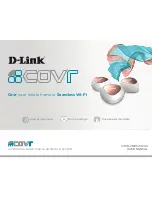
Page 10
SRP-003-545 • Issue 4 • July 2004
Splice
Tray
Holder
Splice
Tray
Holder
Bracket
a) Place pigtails on the outside of the loops
and the buffer tubes closest to the guides.
b) Make sure the fiber from the connector
boot is not pulled too tightly and the bend
radius is not violated.
c) The first loop should be in the back section
of the radius guides and each successive loop
should be in the section above the previous
loop.
d) At the third loop, reinstall the splice tray
holder and trays (Figure 21).
NOTE:
Cable ties can be loosely attached to
organize the coils of buffer tubes and pigtail
assemblies.
Figure 21
Figure 22
12. Installing Fan-outs
12.1
Fiber optic cable can be installed using
BTF kits (ordered separately).
12.2
Slide the splice tray holder toward the top
of the housing and remove it. Remove the splice
tray holder mounting bracket also (Figure 22).
(The fan-out bracket is underneath it.)




























